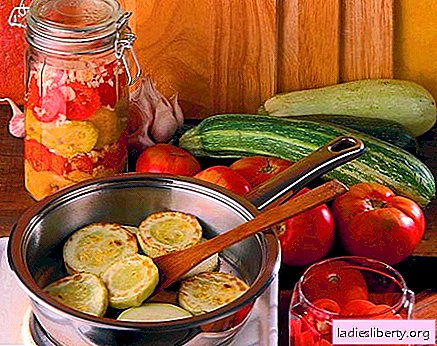
Perhaps there is no person on earth who would negatively relate to lemon.
The fruits of this plant are equally successfully combined with both drinks and food, and they also often help with the housework.
And it’s easy to guess that to have a tree on the windowsill that will regularly supply lemons with them is a cherished dream of many.
If home-made lemon is your dream too, consider all the nuances of how to care for this citrus.
Choose a variety, place and land for homemade lemon
The most important thing to consider when planting homemade lemon is correctly selected varieties that are suitable for home growing. An error in the selection of seeds can lead to a long time of care without obtaining any results.
So, the main varieties of homemade lemon, which will be dwarf or semi-dwarf plants with a good harvest, are:

Meyer

Pavlovsky

Eureka

Novogruzinskiy

Genoa

Maykop
The most popular is the Meyer variety - it is less whimsical, but the yield of such a lemon is poor. Among tall domestic lemons, the varieties Novogruzinsky and Kursky can be distinguished. These varieties will give more fruits, but will require closer attention to themselves.
Growing lemon at home is a responsible task. To get the crop, it is necessary to provide for the lemon all the conditions that it requires. First of all, it is light. Well, if the apartment has windows with access to the southeast - here the lemon will be most comfortable. But if all the windows in the house - northern or southern - will have to work hard. On the north side, it will be difficult for lemon without light, it will be necessary to equip daylight lamps, and make the daylight hours for lemon be 12 hours.
The southern windows will provide full sunlight, but problems may arise due to its oversupply. The way out is to darken the windows to prevent burns.
Careful lemon care should be selected and the appropriate soil.
Here are a number of soil requirements:
• Lumps should not be allowed in the ground; all soil should be composed of small particles. This is because the roots of the lemon do not have hairs and it is more difficult to absorb nutrients.
• Be sure to use drainage in the soil - sand with peat particles, otherwise the roots will not receive oxygen.

• The soil for the lemon should not be too acidic. For "deoxidation" you can use lime or chalk. An ionometer will help to measure the level of acidity, indicators should be approximately equal to pH 7.
• All the nutrients added when planting a lemon will last for about a year. After a year, it is important to regularly fertilize the soil.
• 1-2 years after the appearance of home-made lemon in the house, it must be transplanted into a larger pot (2-3 cm more in diameter) and completely replace the earth. In no case can this be done during the period when the lemon blossoms or bears fruit. Repeat the procedure every 2 years.
• Ground for lemon cannot be used ordinary. You can prepare the mixture at home - mix sand, earth and humus in equal parts.
Lemon home - how to care: features of lighting and watering
As with all plants, in the spring the lemon begins a period of budding. At this time, it is important to maintain indoor temperature within 14-16 degrees. Homemade lemon can be taken outside only at a time when the air temperature will not drop below 12 degrees.
As noted earlier, direct sunlight is best avoided - they can leave burns on lemon leaves. Most of all, home-grown citrus likes diffused sunlight. If there is not enough light for the lemon, it will signal this with a poor crown. In the winter season, it is important to place the lemon away from the batteries and provide at least 8-hour lighting with artificial light.
To take good care of homemade lemon, it is important to pay special attention to watering. It was previously mentioned that lemon will not allow acidic soil and this statement applies to water for irrigation. Therefore, the water must be settled or boiled. In summer, you can water homemade lemon 2 times a week, in winter 1 time is enough. If the leaves begin to curl or the fruits begin to fall, it means that the soil is overdried. But the lemon overflow is extremely non-compliant.
You can add a little baking soda to the water for irrigation, and you should also warm it before watering. A couple of times a day in the hot season, you need to spray lemon from a spray bottle, and as a pleasant trifle, you can sometimes put a pot with a plant in wet sand or gravel. It is better to spray homemade lemon in the evening, and sometimes you need to wipe the leaves with a cloth.
Homemade lemon does not tolerate dry air. If in the climatic zone the humidity is below 40-50%, the lemon can drop leaves, flowers and ovaries. In a hot or dry season, it is enough to put a container of water next to the lemon and more often spray the plant.
Homemade lemon: care - top dressing and pruning
It is best to form a crown and start pruning homemade lemon in April - this is the period when the phase of active plant growth has not yet begun. On the stem of the lemon, it’s enough to leave 4-5 leaves - and you can cut the shoots. The number of flowers also does not hurt to regulate so that all the forces of the plant are not wasted. In order for the crown to form evenly, once every 10 days you can rotate the plant relative to the sun.
If the height of the trunk has reached 15-20 cm, it is necessary to trim the top, leaving 5-7 leaves. From the side kidneys, after this procedure, new shoots will appear. Of all those that appear, only 3-4 should be left looking in different directions - the rest will have to be cut off. These branches will continue to grow and throw branches with buds. It is necessary to leave 3-4 kidneys on them (in the axils of the leaves). Of these, further growth of branches of the next order will begin.
It is important to note that the fruits can appear only on 4-5 order of branches, therefore, it is necessary to ensure high-quality formation of these rows. Only in lemon, Meyer cultivars can bear branches of the second and third order. Vertically growing branches can be ruthlessly pruned.

How to care for homemade lemon - pests and diseases
The most visible problem of homemade lemon may be the falling of its leaves. This can be caused by a number of factors:
• Lack of light in the winter;
• High temperature in the room where the lemon is contained;
• Cold water when watering;
• Too wet soil;
• Too acidic soil;
• Lack of fertilizers and nutrients.
If the leaves of homemade lemon on the bottom are surrounded by cobwebs, then the plant was attacked by a scale insect.

The scabbard feeds exclusively on the juice of the plant, so urgent measures should be taken until the death of home citrus has occurred. It is necessary to treat the plant with Actellik and increase the humidity level in the room. If the plant is already severely affected by pests, you can use a solution of kalbofos - dilute 15 drops of it in 1 liter of water.
When carrying out all preventive measures - regular transplanting, observing the regime of watering and lighting, pruning spoiled branches - a lemon may well exist without problems, and the question "how to care for homemade lemon" will not often arise. If suddenly there are no visible reasons for the depletion of the lemon, but the plant is nevertheless "bad" - you should leave only a few buds for flowering, and remove the rest. The plant needs time to gain strength and adapt.
In general, caring for homemade lemon can be called difficult, but the reward in the form of a fruiting tree on your own windowsill is the highest reward for work and vigilance.











